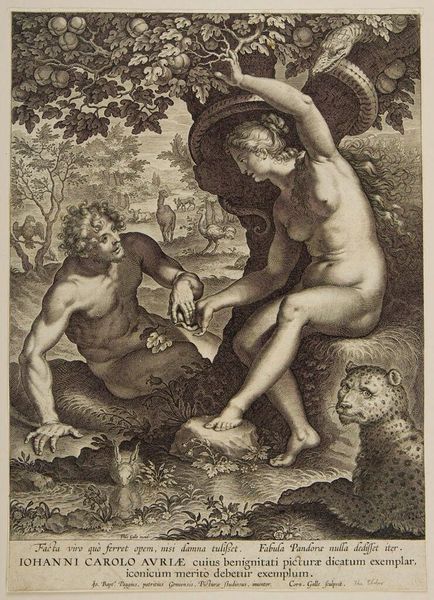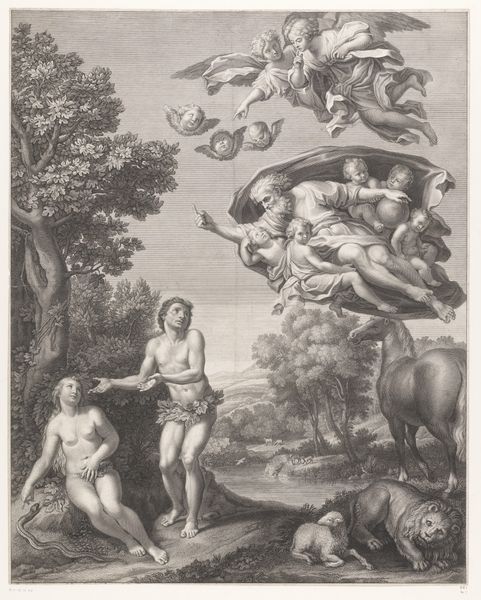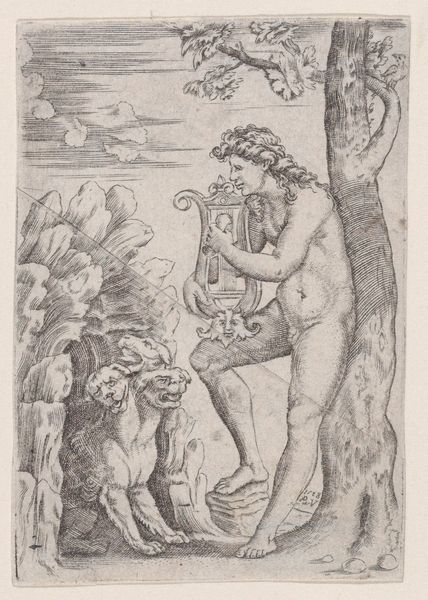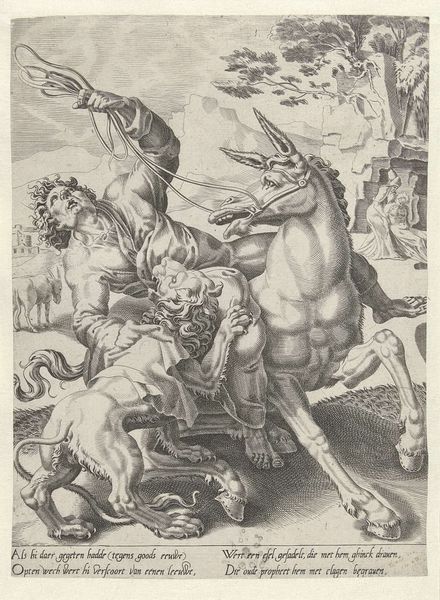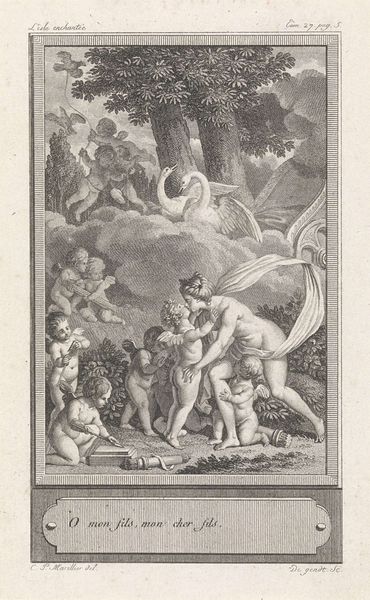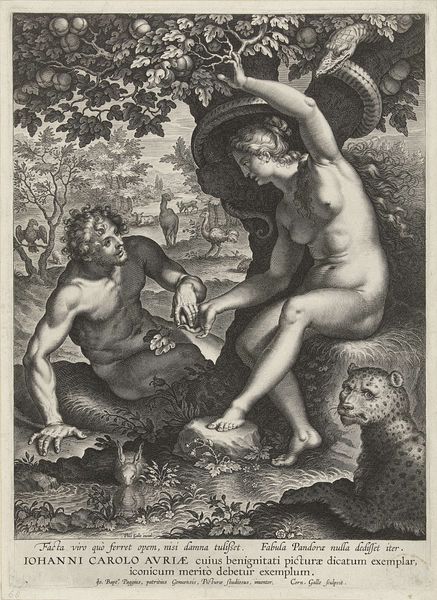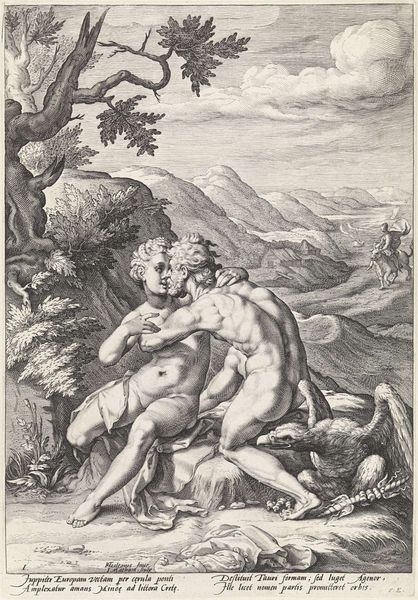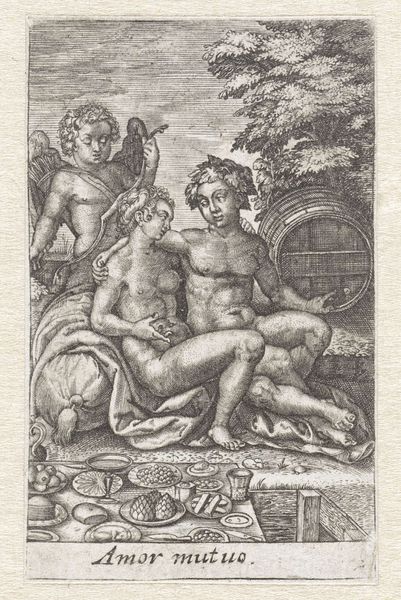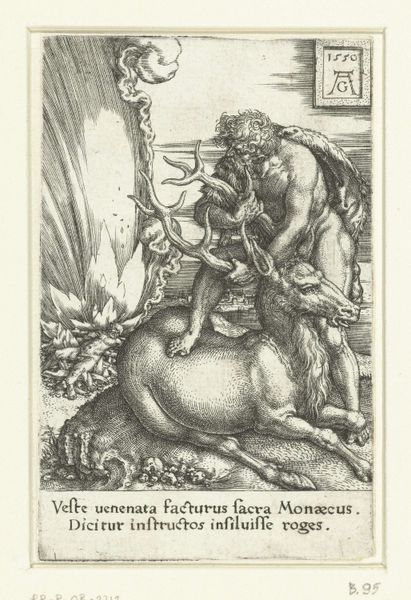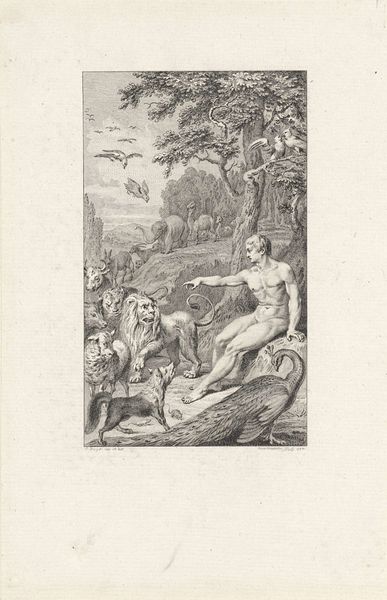
print, etching, engraving
#
narrative-art
#
baroque
# print
#
etching
#
old engraving style
#
caricature
#
figuration
#
pen-ink sketch
#
line
#
history-painting
#
engraving
Dimensions: height 330 mm, width 205 mm
Copyright: Rijks Museum: Open Domain
Curator: I’m completely bewitched by the expression on that dog’s face. It's as if it is waiting with bated breath for Adam to reveal its new, grand name! Editor: Well, let’s orient our listeners to what we are looking at. This is "Adam geeft de dieren hun namen", or "Adam Naming the Animals," an etching by Joseph Mulder, created in 1692. You can find it here at the Rijksmuseum. I see how the printmaking process renders even familiar creatures otherworldly through sheer tonal and textural variation. Curator: Absolutely. There’s this marvelous sense of orchestrated chaos—the way Mulder balances the biblical scene with an almost comical menagerie is striking. I feel a powerful creative energy—a vibrant conversation about origins. It’s all so… exuberant. Editor: I am focusing on Mulder's choices, you know, given the limitations of the printmaking process, particularly the etched line. The technique emphasizes volume, space, and contrast. He manages to suggest form and texture using simple methods—the controlled bite of acid on the metal plate, for example. I am interested to know what types of papers he might have used. Curator: Yes, the etching itself adds to that slightly askew feeling I was trying to describe, like we're peeking into a creation that’s still in progress. But look at Adam—this figure seems lost in his thoughts, perhaps even burdened by the task of naming it all! I see such humanness. Editor: You've hit upon the real tension here. This act of naming is presented as a task, as labor. What kind of authority are we assigning to humans through language here? It points to the material conditions of knowledge production. The labor invested to name something gives one authority, yet also ties one to that thing... a power or commodity relation emerges. Curator: Wow. Editor: So when we look at "Adam Naming the Animals," we are engaging with so much history, art history but also socio-economic conditions. Curator: You’ve helped me to see a world beyond just the purely representational… I'm going to linger with those thoughtful animal eyes a while longer. It's an amazing artwork that sparks so much imagination!
Comments
No comments
Be the first to comment and join the conversation on the ultimate creative platform.
